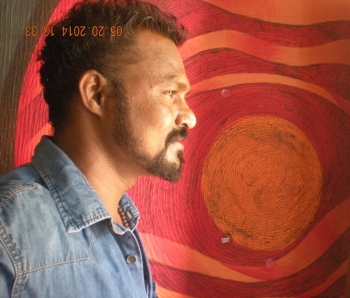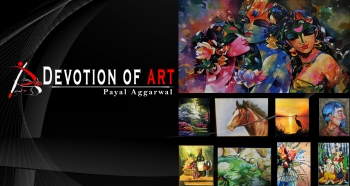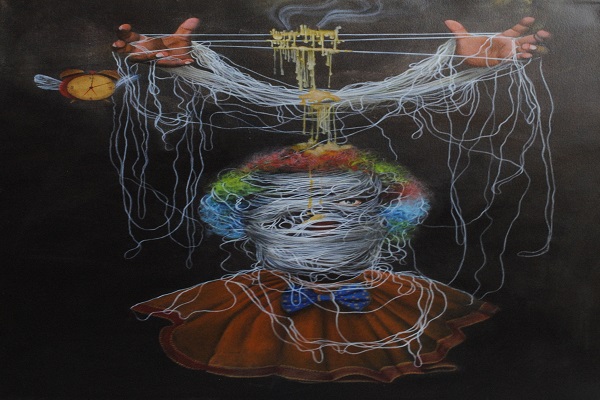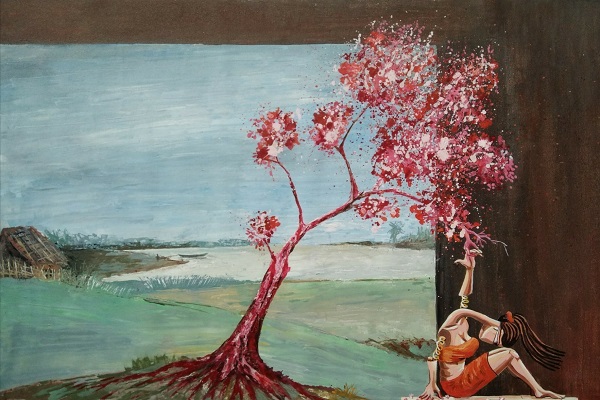
Surrealism is an influential art movement that emerged in the early 20th century, primarily in Europe. It sought to explore the realm of the unconscious mind, dreams, and imagination, creating artworks that defied logical and rational explanations. Surrealist artists aimed to challenge conventional norms and beliefs, breaking away from traditional artistic techniques and embracing the irrational and fantastical.
Surrealism was deeply influenced by Sigmund Freud's psychoanalytic theories, which emphasized the significance of the unconscious mind and the role of dreams in revealing hidden desires and thoughts. Surrealist painters sought to tap into this realm of the mind and express it visually in their works.
Salvador Dalí and René Magritte are two prominent figures who played pivotal roles in the evolution of surrealism paintings and left a lasting impact on the movement. Both Dalí and Magritte contributed to the development and popularization of surrealism through their distinct artistic visions. Their works continue to inspire and captivate audiences, leaving a lasting legacy in the world of art.
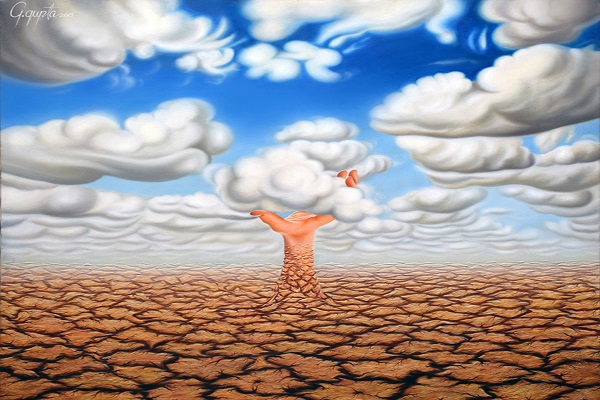
Salvador Dalí: Master of Surrealism
Salvador Dalí was born on May 11, 1904, in Figueres, Catalonia, Spain. From a young age, Dalí showed an interest in art, and his parents recognized his talent and encouraged his artistic pursuits. In his early years, he received formal art training at the Royal Academy of Fine Arts in Madrid.
Dalí's artistic journey was shaped by various influences. One of the most significant influences on his work was the study of psychoanalysis and the theories of Sigmund Freud. This exposure to Freud's ideas about the unconscious mind and dreams deeply impacted Dalí's artistic approach. He became fascinated by the concept of the irrational and sought to explore it through his paintings.
Dalí's exploration of dreamlike landscapes and symbolism became a defining characteristic of his artwork. He aimed to portray the hidden realms of the unconscious mind, using striking and often bizarre imagery. His paintings often combined seemingly unrelated objects and ideas, creating a sense of disorientation and surprise.
Symbolism played a crucial role in Dalí's works. He employed various symbols and motifs to convey his ideas and provoke emotional responses from viewers. For example, clocks were a recurring symbol in Dalí's paintings, representing the fluidity of time and the irrational nature of existence. In his iconic work, "The Persistence of Memory," the melting clocks evoke a sense of timelessness and challenge our perception of reality.
Notable artworks and their interpretations
The Persistence of Memory (1931): This painting is perhaps Dalí's most famous work. It depicts a surreal landscape with melting clocks draped over various objects, including a distorted face. The soft, dreamlike atmosphere and the melting clocks suggest the fluidity of time and the transience of reality. It has been interpreted as a representation of the irrationality of existence and the subjective nature of memory.
The Elephants (1948): In this painting, Dalí depicts elephants with impossibly long, spindly legs, carrying obelisks on their backs. The elephants are set against a barren landscape with a cloudy sky. The elongated legs and peculiar combination of elephants and obelisks create a sense of strangeness and mystery. Some interpretations suggest that the elephants symbolize the weight and burden of memories or subconscious thoughts.
The Persistence of Memory II (1931-1932): This work is a variation on Dalí's famous "The Persistence of Memory." It features similar elements, such as melting clocks and distorted forms, but with a more elongated and stretched appearance. The elongation of the objects creates a sense of tension and instability, further emphasizing the dreamlike quality of the painting. It represents Dalí's continued exploration of the irrational and the malleability of reality.
These notable artworks by Salvador Dalí exemplify his mastery of surrealism. Through his unique style and imaginative compositions, Dalí challenged traditional artistic conventions and expanded the possibilities of visual representation. His works continue to intrigue and inspire audiences, inviting them to explore the depths of their own subconscious minds.
René Magritte: Challenging Reality through Art
René Magritte was born on November 21, 1898, in Lessines, Belgium. He displayed an early interest in art and began formal training at the Académie Royale des Beaux-Arts in Brussels. Initially influenced by Impressionism and Cubism, Magritte later found his unique style within the realm of surrealism.
Subversion of ordinary objects and juxtaposition
Magritte's artistic approach involved subverting ordinary objects and placing them in unexpected contexts. He aimed to challenge the viewer's perception of reality and question the relationship between words and images. Magritte often combined realistic and detailed renderings with enigmatic, dreamlike elements to create a sense of unease and intrigue.
One of Magritte's notable techniques was the use of juxtapositions. He would juxtapose unrelated or contradictory objects to create visual contradictions and provoke contemplation. By altering the context and associations of familiar objects, Magritte sought to disrupt conventional interpretations and encourage viewers to question the meaning behind everyday things.
Analysis of key paintings and their meanings
The Treachery of Images (1929): In this iconic painting, Magritte depicts a detailed image of a pipe accompanied by the statement, "Ceci n'est pas une pipe" ("This is not a pipe"). The contradiction between the image and the text challenges the viewer's assumptions about representation and reality. Magritte reminds us that the painting is not actually a pipe but a representation of one, highlighting the deceptive nature of images and the subjective nature of perception.
The Son of Man (1964): This painting features a man in a suit with an apple obscuring his face, leaving only his eyes visible. The juxtaposition of the apple and the obscured face creates a sense of mystery and invites multiple interpretations. Some suggest that the apple represents hidden truths or the masks we wear to conceal our true selves. The presence of the eyes, however, suggests that there is more to a person than what meets the eye.
Golconda (1953): In this work, Magritte depicts a scene with several identical men in bowler hats, seemingly floating in the sky. The repetition and uniformity of the figures challenge notions of individuality and conformity. The ambiguous setting, with a cloudy sky and buildings, blurs the boundaries between interior and exterior spaces. Golconda explores the themes of identity, social conformity, and the illusory nature of reality.
Through his thought-provoking paintings, René Magritte invited viewers to question the nature of perception, representation, and reality. His clever use of ordinary objects and juxtapositions challenges our preconceived notions, encouraging us to explore the hidden meanings beneath the surface of everyday life. Magritte's contributions to surrealism continue to inspire and challenge artistic conventions to this day.

The Surrealist Movement and Its Key Figures
The surrealist movement emerged in the early 20th century as a reaction to the rationalism and constraints of society. Surrealists sought to explore the realms of the unconscious mind, dreams, and the irrational. They aimed to liberate the creative potential of the human mind and challenge conventional norms and beliefs.
The goals of surrealism were to tap into the unconscious, reveal hidden desires and thoughts, and express them through artistic means. Surrealist artists aimed to create works that defied logical and rational explanations, embracing the fantastical, absurd, and strange. They aimed to provoke emotional responses and encourage viewers to question reality and explore the depths of their own minds.
André Breton and the Surrealist Manifesto
André Breton, a French writer, and poet, played a crucial role in the surrealist movement. In 1924, he published the Surrealist Manifesto, which outlined the principles and objectives of surrealism. The manifesto called for the liberation of the unconscious and emphasized the importance of spontaneous creativity, dreams, and the rejection of reason.
Breton believed in the power of the irrational and sought to fuse dreams and reality in art. He encouraged artists to explore automatic writing and drawing techniques, allowing the subconscious to guide their creative process. Breton's manifesto provided a framework for the surrealist movement, establishing its principles and attracting artists from various disciplines to join the movement.
Other prominent surrealists and their contributions
Max Ernst: Max Ernst was a German artist who made significant contributions to surrealism. He experimented with techniques such as frottage (rubbing surfaces to create textures) and grattage (scratching painted surfaces). Ernst's works often featured strange and fantastic landscapes, mythical creatures, and dreamlike elements.
Joan Miró: Joan Miró, a Spanish painter, sculptor, and ceramicist, brought a unique approach to surrealism. His works combined abstract forms and symbolic elements, blurring the boundaries between reality and imagination. Miró's style was characterized by vibrant colors, biomorphic shapes, and a playful sense of spontaneity.
Leonora Carrington: Leonora Carrington, an English-born Mexican artist and writer, contributed to surrealism with her mystical and symbolic paintings. Her works often featured hybrid creatures, magical landscapes, and occult themes. Carrington's exploration of feminine identity and mythology added a distinct dimension to surrealism.
Remedios Varo: Remedios Varo, a Spanish-Mexican surrealist painter, delved into the realm of fantasy and mysticism in her works. Her paintings depicted intricate and dreamlike scenarios, often featuring women engaged in mysterious and symbolic activities. Varo's attention to detail and use of symbolism added depth to her surrealist compositions.
These are just a few of the prominent surrealists who made significant contributions to the movement. Each artist brought their unique style and ideas to surrealism, enriching the movement with a diverse range of perspectives and techniques. Together, they pushed the boundaries of artistic expression and challenged societal norms, leaving a lasting impact on the art world.
Interplay between Surrealism and Other Artistic Movements
Dadaism, an artistic and literary movement that emerged during World War I, had a significant influence on the development of surrealism. Dadaists rejected conventional artistic norms and sought to disrupt and challenge established values and traditions. Their works often embraced absurdity, chance, and the rejection of rationality.
Surrealism, which emerged shortly after Dadaism, drew inspiration from Dadaist principles and expanded upon them. Surrealists shared Dadaists' rejection of rationality and embraced the irrational and the unconscious. They took Dada's ideas of subversion, irony, and juxtaposition and merged them with a more focused exploration of the unconscious mind and dreams.
The influence of Dadaism can be seen in the techniques and concepts employed by surrealists. Automatic writing and drawing, derived from Dadaist practices, became central to surrealist creative processes. The use of chance and random associations, as well as the incorporation of everyday objects and found materials, were elements that surrealism inherited from Dadaism. The rebellious and anti-establishment spirit of Dadaism also resonated with surrealism's goal of challenging societal norms and conventions.
Surrealism's impact on later art movements
Surrealism had a profound impact on later art movements, influencing and inspiring artists across various disciplines. Its legacy can be seen in the following movements:
Abstract Expressionism:
- Abstract Expressionism, which emerged in the mid-20th century, was deeply influenced by surrealism. Artists such as Jackson Pollock and Mark Rothko drew upon the surrealist emphasis on the subconscious and the exploration of the inner self. They embraced gestural, spontaneous, and emotive forms of expression, echoing the surrealist pursuit of artistic liberation.
Pop Art:
- Pop Art, which emerged in the 1950s and 1960s, drew on elements of mass culture and consumerism. However, some Pop artists, such as Claes Oldenburg and Richard Hamilton, incorporated surrealistic strategies into their work. They combined everyday objects and imagery with elements of fantasy and the irrational, blurring the boundaries between high and low culture.
Magical Realism:
- Magical Realism, a literary and visual art movement, was heavily influenced by surrealism. It emerged primarily in Latin America and combined realistic depictions with elements of fantasy and the supernatural. Artists like Frida Kahlo and Gabriel García Márquez embraced the surrealistic exploration of dreams, mythology, and the subconscious in their works.
Contemporary Art:
- Surrealism continues to be a source of inspiration for contemporary artists. Many contemporary artworks feature surrealistic elements, exploring themes of identity, memory, and the subconscious. Artists like Yayoi Kusama, Cindy Sherman, and Anish Kapoor have incorporated surrealistic strategies into their works, pushing the boundaries of artistic expression.
The interplay between surrealism and subsequent art movements demonstrates the enduring influence and relevance of surrealistic ideas and techniques. Surrealism's impact can be seen in the ongoing exploration of the unconscious mind, the blurring of reality and fantasy, and the subversion of conventional artistic norms in contemporary art.
Surrealism Today: Contemporary Artists Carrying the Torch
Surrealism has continued to evolve and find new expressions in the modern era. While retaining its core principles of exploring the irrational and the subconscious, contemporary surrealism often reflects the complexities of our digital age, social issues, and cultural diversity. Here are some ways surrealism has evolved:
Digital Surrealism: The rise of digital technology has opened up new possibilities for surrealistic expression. Many contemporary artists employ digital tools and techniques to create dreamlike and fantastical imagery. The blending of reality and digital manipulation allows for surrealistic creations that challenge the boundaries of the physical world.
Political and Social Commentary: Contemporary surrealists often use their art as a means to address social and political issues. By combining fantastical elements with real-world imagery, they create visual narratives that challenge societal norms, critique power structures, and shed light on pressing issues such as inequality, climate change, and identity.
Hybridization and Multicultural Influences: In an increasingly interconnected world, contemporary surrealism draws from diverse cultural influences. Artists blend and juxtapose elements from various cultural traditions, creating hybrid imagery that explores the intersections of different identities and perspectives. This approach reflects the multicultural nature of contemporary society and challenges traditional notions of identity and representation.
Notable contemporary artists inspired by surrealism
HR Giger: HR Giger was a Swiss surrealist artist known for his biomechanical and highly detailed artworks. His fusion of organic and mechanical elements created a haunting and otherworldly aesthetic. Giger's work, including his iconic design for the film "Alien," showcases his mastery of combining the surreal with the grotesque.
Audrey Kawasaki: Audrey Kawasaki, an American-Japanese artist, creates ethereal and enigmatic works that blend elements of surrealism with influences from traditional Japanese art. Her paintings often feature delicate female figures with haunting, introspective expressions, juxtaposed with surreal or symbolic elements. Kawasaki's art explores themes of identity, vulnerability, and the human psyche.
Juxtapoz Magazine Artists: Juxtapoz Magazine has been instrumental in promoting contemporary surrealism. The publication showcases numerous artists who explore the realms of surrealism in their work. Artists such as Mark Ryden, Marion Peck, and Ray Caesar employ rich symbolism, dreamlike imagery, and meticulous techniques to create haunting and thought-provoking art.
Alex Gross: Alex Gross, an American artist, blends surrealism with pop culture references to create visually captivating and thought-provoking pieces. His paintings often depict individuals adorned with various objects and symbols from popular culture, exploring themes of consumerism, technology, and the human condition.
These are just a few examples of contemporary artists who draw inspiration from surrealism and continue to push its boundaries. Through their innovative and thought-provoking works, they carry the torch of surrealism into the modern era, inviting viewers to delve into the realms of the subconscious, challenge societal norms, and explore the mysteries of the human experience.
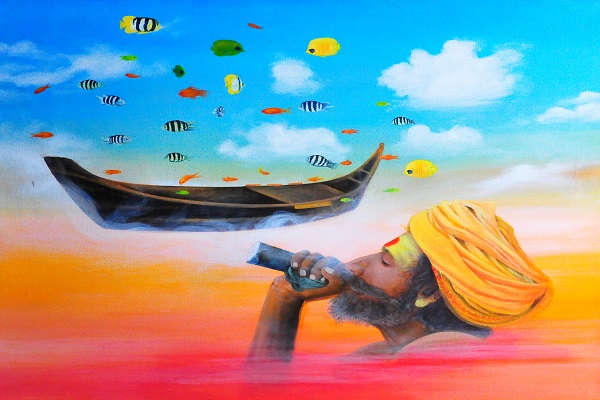
Conclusion
Salvador Dalí and René Magritte were two influential figures in the evolution of surrealism. Dalí, with his exploration of dreamlike landscapes and symbolism, brought a sense of theatricality and hyperrealism to surrealism. His works, such as "The Persistence of Memory," challenged notions of time and reality. Magritte, on the other hand, subverted ordinary objects and juxtaposed unrelated elements to question our perceptions. His paintings, like "The Treachery of Images," challenged the relationship between words and images. Both Dalí and Magritte pushed the boundaries of surrealism, leaving a lasting impact on the art world.
Surrealism remains relevant in the art world today. Its exploration of the subconscious, its challenge to conventional norms, and its fusion of reality and fantasy continue to inspire contemporary artists. Surrealism has evolved in the modern era, incorporating digital tools, addressing social and political issues, and drawing from multicultural influences. Contemporary artists inspired by surrealism, such as HR Giger, Audrey Kawasaki, and those featured in Juxtapoz Magazine, carry on the tradition, exploring the depths of the human psyche and challenging the boundaries of perception.
In conclusion, surrealism painting has undergone a fascinating evolution, from its roots in the early 20th century to its continued relevance in the modern era. The contributions of artists like Dalí and Magritte have left an indelible mark, shaping the movement and inspiring generations of artists. Surrealism's legacy persists in the exploration of the subconscious, the fusion of reality and fantasy, and the ability to provoke thought and introspection. As the art world continues to evolve, surrealism remains a vital and influential force, inviting us to delve into the mysterious realms of the imagination.











